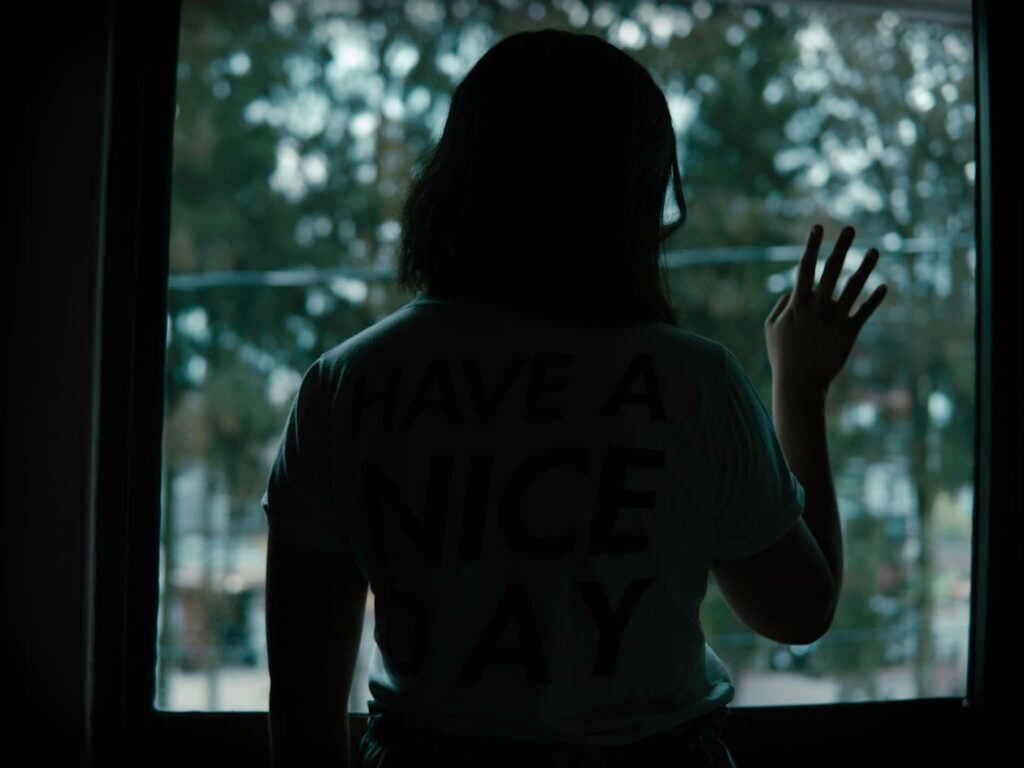After Two Surgeries and Thirteen Years, Bindi Irwin Finally Breathes Again

Something changed when Bindi Irwin crawled across her bedroom floor at three in the morning, desperately trying to reach her daughter’s cot while fighting waves of nausea and blinding pain. Grace was crying, and her mother couldn’t stand up without risking unconsciousness. At 27 years old, wildlife warrior and beloved television personality found herself trapped in a body that had become her prison, unable to care for her child without fear of collapsing.
Nobody watching her Instagram feed would have guessed. Nobody seeing her smile at Australia Zoo alongside brother Robert and mother Terri could have imagined the secret she carried for over a decade. Between conservation work and raising her four-year-old daughter with husband Chandler Powell, Bindi waged a silent war against an enemy most people refused to acknowledge existed.
Now, after two major surgeries and 13 years of fighting for answers, she’s sharing an update that carries both heartbreak and hope for millions of women worldwide.
Fifty-One Lesions and a Body Under Siege
Surgeons discovered 51 endometriosis lesions scattered throughout Bindi’s body during her recent procedures. Doctors also removed a chocolate cyst filled with endometrial fluid, her appendix, and repaired a hernia from childbirth that had begun unzipping as she described it. Imagine carrying that much damage inside you while maintaining a public persona of strength and positivity, all while caring for a young child and managing one of Australia’s most famous wildlife sanctuaries.
Medical professionals finally validated what Bindi had known since she was 14 years old when extreme fatigue and constant nausea first took over her life. She would fall asleep wherever her family traveled, unable to keep her eyes open no matter how hard she tried. Pain became her constant companion, showing up every single day rather than just during her monthly cycle like many people assume endometriosis works.
Blood tests, CT scans, MRIs, and ultrasounds filled her teenage and young adult years. Doctors tested her for tropical diseases, Lyme disease, and even cancer before anyone considered endometriosis as a possibility. Along the way, medical professionals handed her diagnoses of irritable bowel syndrome and hormonal imbalances, each one another dead end in her search for real answers.
When Medicine Tells Women Their Suffering is Normal

Bindi’s voice breaks with emotion when she recalls how doctors made her feel during those lost years. “I felt utterly ashamed as a teenager and young adult being told that my pain was just part of being a woman. I felt lesser. I felt hurt. I felt weak.” Imagine being told repeatedly that agony severe enough to make you vomit and pass out represents normal female existence, something you simply need to accept and manage with tea and rest.
Medical gaslighting pushed her into isolation where only her mother Terri, brother Robert, and husband Chandler knew the full truth of what she endured daily. Everyone else probably thought she was unreliable when she cancelled plans at the last minute, backing out of commitments because pain had knocked her sideways again. Friends likely questioned her dedication when she failed to show up, unaware that she was lying on a bathroom floor unable to move without triggering another wave of nausea.
Society teaches women to hide their pain, to smile through discomfort, to apologize for their bodies’ failures. Bindi internalized those lessons so deeply that she perfected the art of appearing fine while falling apart internally. Her experience mirrors what millions of women face when the medical establishment dismisses female pain as exaggeration, attention-seeking, or simple weakness.
Grace Warrior Arrived as a Medical Miracle
Endometriosis frequently causes infertility, making conception difficult or impossible for many women living with the condition. When Bindi and Chandler welcomed Grace in 2021, they understood their daughter represented a gift many couples with endometriosis never receive. Emma Bunton of Spice Girls fame spoke about receiving similar news when diagnosed, remembering how a doctor told her only 50 percent of women with endometriosis go on to have children.
Grace’s arrival should have brought pure joy, but instead, Bindi’s pain magnified to levels she had never experienced before. Giving birth triggered a cascade of worsening symptoms that pushed her body past its breaking point. Pelvic pain intensified, abdominal pain became constant, and new agonies emerged that made her previous suffering seem almost manageable by comparison.
People ask Bindi and Chandler constantly about expanding their family, a question that lands like a knife every single time. Well-meaning friends and strangers pose it daily, never considering what personal battles might make that inquiry deeply painful. “Young girls and women shouldn’t feel alone with pain in the driver’s seat of their lives,” Bindi wrote to her 5.7 million Instagram followers, hoping to shift how society approaches conversations about women’s bodies and reproductive choices.
Bindi refuses to call Grace her only child because that word carries implications she rejects. Grace is her child, her one beautiful daughter, and that’s enough. Whether more children come remains uncertain, dependent on factors beyond simple desire or planning. Medical realities shape family building in ways people who ask invasive questions rarely stop to consider.
Living With a Diagnosis Nobody Believes

Symptoms don’t confine themselves to menstruation periods when you have endometriosis. Bindi experienced extreme pelvic pain every single day, debilitating fatigue that made staying awake feel impossible, and pain during intimacy that affected her marriage. Bowel movements could trigger agony, heavy bleeding became her norm, and abdominal bloating made her look pregnant when she wasn’t.
Tissue similar to uterine lining grows outside the womb in endometriosis patients, attaching to ovaries, fallopian tubes, and other internal structures. Over 6.5 million women in America battle this condition, yet research funding lags far behind other diseases, and average diagnosis time stretches beyond seven years. No cure exists, and scientists still cannot explain what causes some women to develop endometriosis while others never face it.
Bindi suspects her female relatives also suffer from the same condition after comparing symptoms with her mother, grandmother, and aunts. Women often gauge whether their periods are normal by looking at the experiences of women closest to them, but that comparison fails when everyone in your family carries the same genetic predisposition toward the disease.
May 2025 brought another crisis when Bindi traveled to Las Vegas for the annual Steve Irwin Gala, an event honoring her late father’s conservation legacy and raising funds for Wildlife Warriors. She arrived determined to attend despite mounting discomfort, ready to put on a brave face and push through pain like she had done countless times before. Her appendix had other plans.
Brother Robert confirmed during the gala that Bindi had been rushed into emergency surgery after her appendix ruptured. Surgeons told her the organ had to come out immediately, overruling her protests about missing the event. Terri skipped the gala to stay with her daughter during recovery, both women devastated about missing an evening dedicated to Steve’s memory.
Breaking Silence Revealed an Army of Suffering Women
Speaking publicly about her endometriosis diagnosis in March 2023 terrified Bindi. Opening up about her most vulnerable moments, sharing times when she sat in a hole so deep she couldn’t see a way out, required courage she wasn’t sure she possessed. Keeping secrets had protected her from judgment, but it had also suffocated her under the weight of pretending everything was fine.
Her Instagram post revealing her diagnosis received over 1.1 million likes, and thousands upon thousands of women reached out to share their own stories. Reading message after message from women whose experiences mirrored her own broke Bindi’s heart. Some had waited even longer for diagnosis, others still fought for doctors to take their pain seriously, and many suffered through misdiagnoses identical to what she had endured.
Response to her vulnerability proved both devastating and beautiful. Devastating because it exposed how widespread the problem truly is, how many women suffer alone without support or answers. Beautiful because it created a community of women who finally felt less isolated, who could support each other through battles they had fought in silence.
“I cannot express the gravity of my emotions as I am beginning to recognize myself again,” Bindi wrote in her recent update. Chronic illness steals your identity slowly, replacing the person you were with someone defined entirely by pain and limitations. Recovery means rediscovering who you are underneath the suffering, meeting yourself again after years of absence.
Healing Brings Hope and Demands Change
Bindi can function now without wanting to throw up or pass out from pain. She’s gaining strength back slowly, piece by piece, day by day. Surgeons gave her a second chance at life she genuinely never thought she would receive. Feeling like a new woman after spending your entire adult life sick represents a miracle she’s still learning to process.
Her journey required family support many endometriosis patients never receive. Surgery costs money most people can’t afford, and navigating the healthcare system demands resources and determination that poverty, isolation, or lack of education can make impossible to access. Bindi uses her platform to advocate for systematic changes that would help women without her advantages.
Young girls need to hear that pain isn’t just part of being female. Women deserve doctors who listen when they describe their symptoms rather than dismissing their experiences as exaggeration or weakness. Healthcare systems must provide better access to diagnosis and treatment, removing barriers that leave patients suffering for decades before receiving help.
Robert noted during the Vegas gala that health truly is important, watching his sister battle one condition after another. Bindi has become a powerful advocate for women’s health, speaking openly about topics society prefers to keep hidden. Removing stigma requires public figures willing to be vulnerable, to share ugly truths about pain and medical failures.
Endometriosis has no cure, and Bindi may require additional surgeries in five or ten years when lesions regrow. For now, though, she’s celebrating being on the other side of pain, able to care for Grace without fear of collapsing. She’s sending light and love to others fighting the same battle, hoping her voice helps them feel less alone.
Medical systems will only improve when enough voices demand it. Women supporting women, sharing stories previously kept secret, creates momentum that can shift how society treats female health. Bindi Irwin chose to speak up, and in doing so, she gave millions of women permission to stop apologizing for their bodies and start demanding the care they deserve.
Loading...

